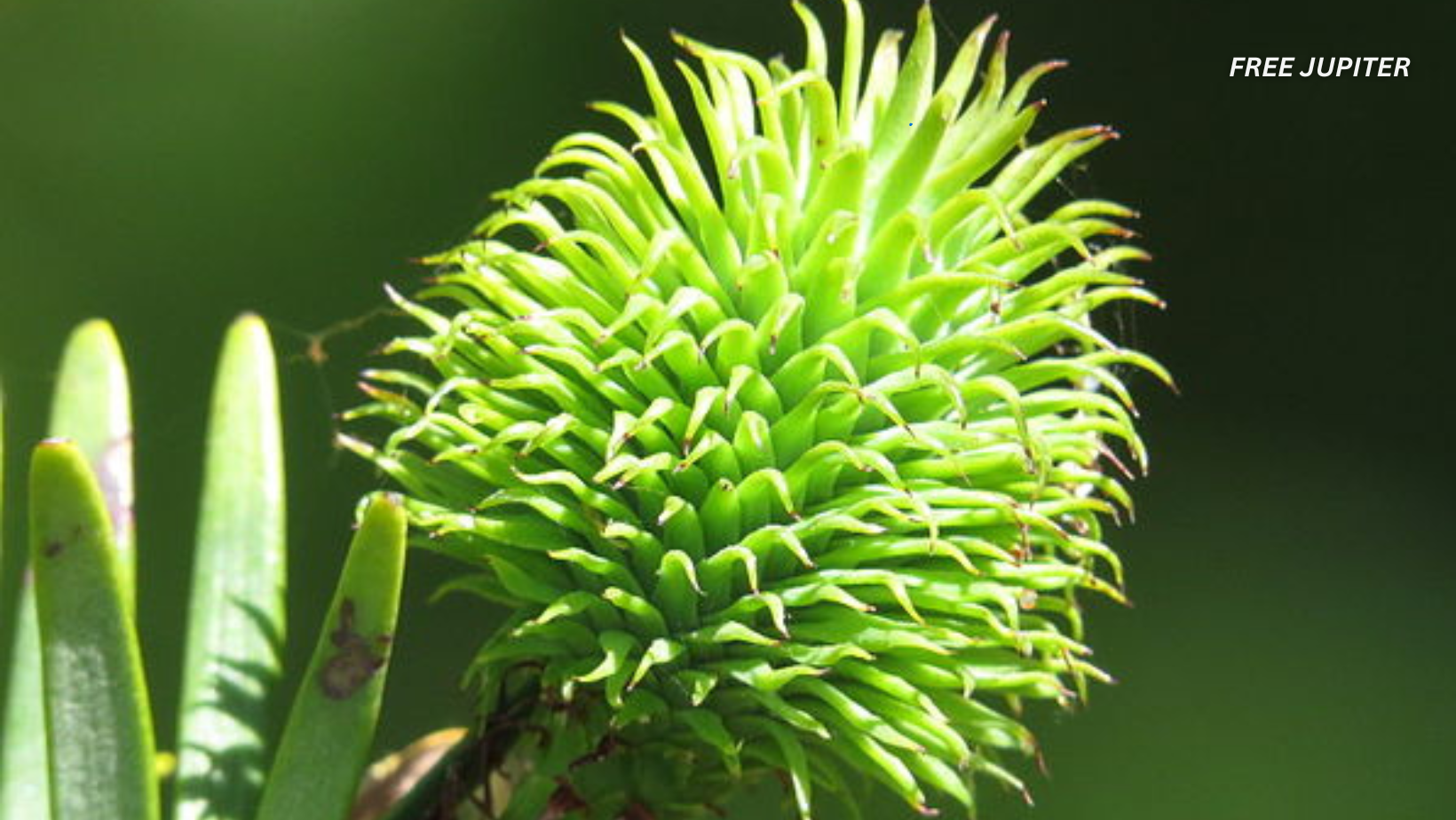Friendly Note: FreeJupiter.com shares general info for curious minds 🌟 Please fact-check all claims—and always check health matters with a professional 💙
In a quiet corner of Worcestershire, England, an extraordinary chapter in botanical history has quietly unfolded. Pamela and Alistair Thompson, a retired couple with a passion for gardening, have nurtured a living relic from a time when dinosaurs roamed the Earth—a Wollemi pine—that has now borne fruit for the very first time outside its native land. This rare event not only marks a personal triumph for the Thompsons but also signals a hopeful stride forward in the conservation of a species once thought lost to the ages.
A Living Link to the Age of Dinosaurs
The Wollemi pine (Wollemia nobilis) is often described as a “living fossil,” a term well-earned by its lineage that stretches back roughly 90 million years to the late Cretaceous period. For decades, scientists believed this ancient conifer had vanished from the planet, its existence relegated to fossil records. That perception changed dramatically in 1994 when a park ranger named David Noble stumbled upon a small grove of these enigmatic trees in a secluded canyon within Australia’s Wollemi National Park. This discovery was hailed as one of the most remarkable botanical finds of the 20th century, likened to uncovering a living dinosaur.
The Wollemi pine’s distinctive features set it apart: its bark has a unique, bubbly texture reminiscent of chocolate mousse, and its flexible leaves spiral elegantly around the branches. Mature specimens can reach heights of up to 40 meters, often with multiple trunks emerging from a single root system. Some trees in the wild are believed to be centuries old, possibly even over a millennium.
Read more: Ancient Sarcophagus Unsealed After 2,000 Years—And What Was Inside Is Mindblowing
From Australian Wilderness to English Garden
The Thompsons’ journey with their Wollemi pine began in 2010, when they acquired a modest 18-inch sapling at a charity auction. Little did they realize that this humble purchase would place them at the forefront of a botanical breakthrough. Pamela fondly recalls being told that adopting the tree was akin to “adopting a dinosaur,” a fitting metaphor for a species that has survived mass extinctions and geological upheavals.
Years of careful tending in their garden near the Malvern Hills have transformed the sapling into a towering specimen over 13 feet tall. This spring, the couple was astonished to find their prehistoric tree producing both male and female cones simultaneously—a prerequisite for natural reproduction that had never before been documented outside Australia.
Why This Fruiting Is a Conservation Milestone
The significance of the Thompson’s Wollemi pine bearing fruit extends far beyond their garden gate. Historically, conservation of this critically endangered species has relied heavily on cloning techniques, which produce genetically identical offspring. While effective in preserving numbers, this method limits genetic diversity, leaving populations vulnerable to diseases and environmental shifts.
The emergence of fertile cones on this tree introduces the possibility of sexual reproduction, which generates genetic variation essential for the species’ long-term adaptability and survival. Botanists from renowned institutions, including Kew Gardens, have expressed excitement over this development, viewing it as a potential turning point in efforts to safeguard the Wollemi pine’s future.
“If these seeds prove viable, it would represent a renaissance for the species,” noted a Kew Gardens expert. Each seed could give rise to a genetically unique sapling, enhancing resilience and broadening the genetic pool.
Read more: James Webb Confirms There’s Something Seriously Wrong With Our Understanding Of The Universe
The Challenges and Triumphs of Protecting a Botanical Treasure
The Wollemi pine’s survival story is one of resilience and careful stewardship. In the wild, the species is critically endangered, confined to a handful of isolated pockets within Wollemi National Park. The exact locations remain a closely guarded secret to shield the trees from human interference and disease.
The devastating bushfires of 2020 posed a grave threat to these ancient groves, burning over a million acres and nearly wiping out the remaining wild populations. Recognizing their irreplaceable value, specialized firefighting teams were deployed to protect these botanical relics, employing aerial fire retardants and ground irrigation to safeguard the trees. Miraculously, many Wollemi pines survived, standing as verdant beacons amid the charred landscape.
Beyond in situ conservation, Australian authorities have implemented extensive propagation programs, distributing saplings globally to reduce the risk of extinction and curb illegal harvesting. The Thompsons’ tree is part of this broader effort to cultivate and protect the species outside its native range.
A Personal Connection to Prehistory
For the Thompsons, caring for their Wollemi pine is more than a horticultural hobby—it is a daily ritual filled with wonder and anticipation. Alistair, a former surgeon, likens the experience to “expecting panda babies,” underscoring the rarity and preciousness of this moment. Pamela describes their routine of checking the developing cones as akin to children on Christmas morning, a testament to the joy and hope this ancient tree brings into their lives.
The couple plans to share any viable seeds with botanical gardens around the world, contributing to a distributed network of genetically diverse trees. This grassroots conservation effort highlights how individuals outside scientific institutions can play a vital role in preserving Earth’s natural heritage.
Cultivating a Piece of Earth’s Ancient Past
The Wollemi pine’s arrival in private gardens like the Thompsons’ could inspire wider interest in cultivating this prehistoric species. However, growing these trees is no simple task. They require well-drained soil, filtered sunlight, and protection from harsh frost. Alistair cautions that nurturing a Wollemi pine is a commitment to maintaining a living fragment of Earth’s distant past, not a casual gardening endeavor.
For those intrigued by the idea of growing a “dinosaur tree,” specialized nurseries and botanical gardens occasionally offer Wollemi pine saplings. Owning one is a unique opportunity to connect with a lineage that predates humanity by millions of years, a living testament to the planet’s enduring natural wonders.
The Broader Significance of Rediscovering Ancient Life
The Wollemi pine’s story resonates beyond botany, reflecting humanity’s ongoing fascination with uncovering and preserving relics of the past. Just as scientists have recently detected vital elements for life on distant exoplanets or sent cultural artifacts into space as messages to potential extraterrestrial civilizations, the rediscovery and propagation of the Wollemi pine symbolize our collective desire to understand and protect the extraordinary diversity of life on Earth.
This ancient conifer, once thought lost to time, now stands as a symbol of hope and continuity. Thanks to the dedication of both experts and passionate individuals like the Thompsons, the Wollemi pine’s saga continues—rooted in history, yet reaching toward a future where this remarkable species may once again flourish.










